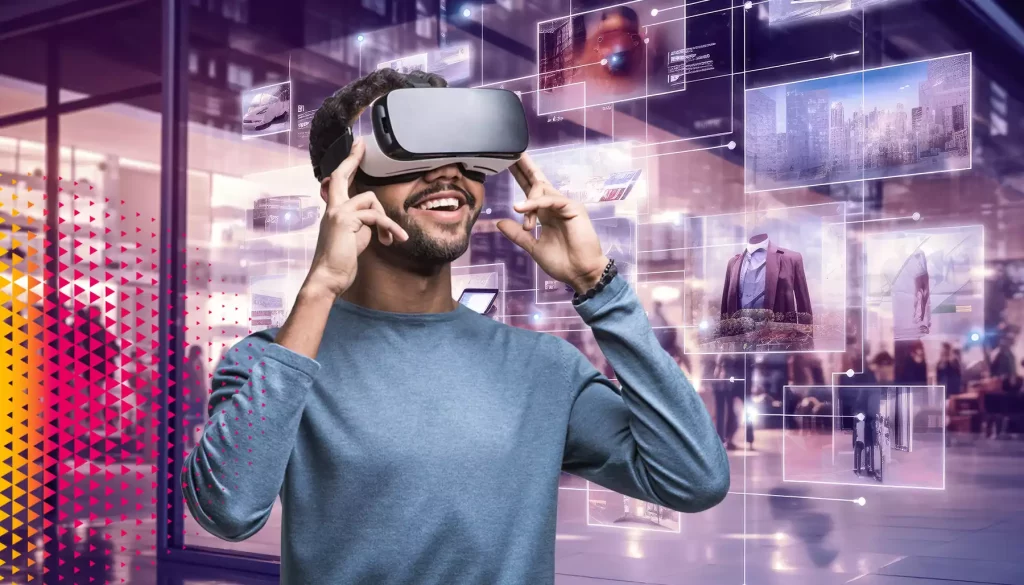6 Innovative Retail Trends in 2024

Recent figures from Fevad are impressive: retail in France grew by 8.3% in the second quarter of 2023, generating a total revenue of €39.3 billion for that period. The sector is thriving, and 2024 is poised to be a year of innovation, from store shelves to hyper-personalized customer interactions, all while addressing environmental concerns. How are technological innovations transforming retail? How is connected retail enhancing the customer experience? Here’s a look at the top trends shaping 2024 that you need to adopt for your stores.
The Revival of Physical Stores
Physical stores are far from obsolete despite the digital boom. A key innovative strategy adopted by many retailers is the “click and mortar” concept. This approach sees online-only businesses opening physical stores to complement their online offerings, blending the benefits of e-commerce with the tangible experience of in-store shopping.
For example, La Redoute Intérieurs offers a select range of its online products in a physical setting, allowing customers to see and feel items before purchasing. This immersive experience builds customer trust and eases purchasing decisions.
Similarly, LDLC, a leading online retailer for IT and electronics, is targeting 100 physical stores. These stores not only sell products but also offer services like repairs and technical support, enhancing the overall customer experience.
Spartoo, an online shoe retailer, embraced this approach in 2015 by opening physical stores. This allows customers to try on shoes before buying, while still enjoying online benefits like home delivery and free returns.

Omnichannel at the Heart of the Customer Journey
In today’s retail landscape, omnichannel is essential. Consumers expect a seamless transition between online and in-store experiences.
According to eMarketer, nearly 75% of online shoppers use multiple channels before making a purchase. They want to browse online, try in-store, buy on their phone, and return items online if needed. Mobile commerce now accounts for 22% of e-commerce revenue, according to Fevad.
To meet these expectations, retailers have to offer an integrated omnichannel approach, ensuring a consistent experience across all touchpoints. Key aspects include real-time inventory tracking, synchronized shopping carts across channels, and personalized offers based on individual preferences. The goal is to combine the convenience of online shopping with the tactile, immersive experience of physical stores.
The Connected Salesperson
In modern retail, the connected salesperson is crucial. Equipped with tablets, smartphones, or smartwatches, they access real-time information without breaking customer interaction. These digital tools enable them to provide personalized advice and recommendations tailored to each customer’s specific needs.
Live Stream Shopping
Live stream shopping is where the connected salesperson truly excels. This emerging trend allows consumers to watch live product demonstrations and interact with salespeople in real time. During these broadcasts, salespeople can answer questions, provide live demos, and even close sales on the spot, creating an engaging and immersive shopping experience.
Similarly, video shopping is gaining momentum. Brands use video content to promote their products and connect with consumers. In this context, the connected salesperson plays a dual role as both an expert and an influencer, using their in-depth product knowledge to drive sales and influence purchasing decisions.

Artificial Intelligence
In 2024, Artificial Intelligence (AI) remains a cornerstone of the retail industry. While generative AI is getting a lot of attention, AI tools focused on research and data analysis are proving to be exceptionally valuable. These tools enable retailers to achieve hyper-personalization by consolidating data and predicting inventory needs based on specific trends and statistics.
However, the landscape is shifting with growing concerns over data privacy and the phasing out of third-party cookies. This makes the collection of high-quality first-party data more crucial than ever. Retailers need to build trust by ensuring privacy protection and being transparent about how they use data. This not only meets customer expectations but also enhances brand reputation and loyalty.
The Enhanced Customer Journey
Virtual Reality (VR) and Augmented Reality (AR) are increasingly crucial to the shopping experience. These technologies offer customers an immersive and interactive journey. For instance, virtual fitting tools let customers try on clothes or accessories online, providing the convenience and ease that Generation Y, the leading consumer group of 2024, expects.
Brands incorporating VR and AR can attract this discerning demographic by delivering a unique and memorable shopping experience. By integrating digital elements into physical stores, retailers create a seamless, immersive customer journey that aligns with evolving consumer expectations and elevates the overall shopping experience.
Eco-Responsibility
In Europe, the second-hand market is rapidly expanding as more consumers choose pre-owned products over new ones. This shift comes with increasing demands for product traceability, including detailed information about material origins and manufacturing conditions.
Decarbonization and the circular economy are critical in the move towards eco-responsibility. Companies have to rethink their production and distribution processes to minimize their carbon footprint and promote the reuse and recycling of products. This involves using sustainable materials, adopting environmentally friendly production practices, and implementing systems for collecting and repurposing end-of-life products.
To stay ahead of this trend, retailers need to invest in tools that guarantee product traceability, accurately assess environmental impact, and transparently communicate their sustainability efforts to consumers. By integrating these eco-friendly practices into their core strategies, brands can meet rising customer expectations and play a pivotal role in fostering a sustainable future for the retail industry.
For retail players, 2024 is all about rapidly adapting to evolving consumer expectations and investing in innovation to ensure long-term success. Embracing solutions like store digitalization, IoT, and specialized management software is crucial. Without these advancements, retailers risk falling short of customer demands and missing critical opportunities to boost profitability.



